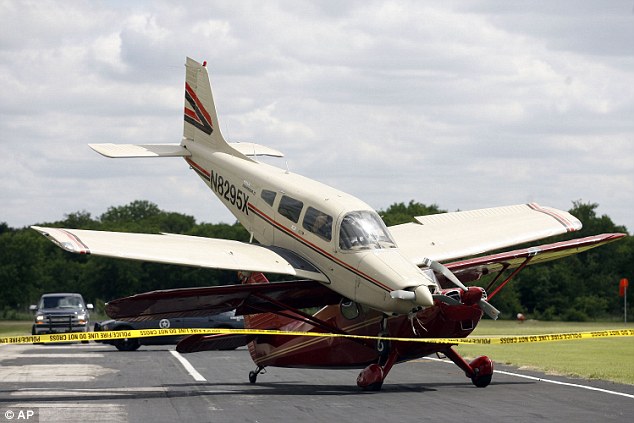A collapsed nose wheel, scraping a wing while taxiing, or veering off the runway – these sorts of things always seem to attract an audience (with a variety of theories as to what happened), but do we know what to do should the unfortunate or embarrassing happen? As with most regulations, it all seems rather complicated and nauseating so I am going to try and explain it in a practical sense, so that should you or I ever have the misfortune, we don’t appear as dumb-struck buffoons and know what course of action should be taken.
INCIDENTS
The less concerning of the two, an incident is any (possibly pants-wetting moment), that is not an accident, but is associated with the operation of an aircraft which affects or could affect the safety of operation. A serious incident usually means that it was almost an accident. They can occur when the aircraft is manned (from the moment all persons have boarded until they have all disembarked), or unmanned (between the time the aircraft is ready to move with the purpose of flight, until such time as it comes to rest at the end of the flight and the primary propulsion system is shut down). Here are some examples:
Near collisions requiring an avoidance maneuver to avoid a collision or an unsafe situation or when an
avoidance action would have been appropriate.
. Controlled flight into terrain only marginally avoided.
. Aborted take-offs on a closed or engaged runway.
. Take-offs from a closed or engaged runway with marginal separation from obstacle(s).
. Landings or attempted landings on a closed or engaged runway.
. Gross failures to achieve predicted performance during take-off or initial climb.
. Fires and smoke in the passenger compartment, in cargo compartments or engine fires, even though such
fires were extinguished by the use of extinguishing agents.
. Events requiring the emergency use of oxygen by the flight crew.
. Aircraft structural failures or engine disintegrations not classified as an accident.
. Multiple malfunctions of one or more aircraft systems seriously affecting the operation of the aircraft.
. Flight crew incapacitation in flight.
. Fuel quantity requiring the declaration of an emergency by the pilot.
. Incidents such as undershooting, overrunning or running off the side of runways.
. System failures, weather phenomena, operations outside the approved flight envelope or other
occurrences which could have caused difficulties controlling the aircraft.
. Failures of more than one system in a redundancy system mandatory for flight guidance and navigation.
These things should be reported as they contribute to aviation safety research, and ultimately your safety! You can report to any ATC or the Commissioner (CAA), and the investigator in charge will provide you with the necessary forms. If the incident is aircraft related, DO NOT move the aircraft until you have reported – you will be instructed as to what to do. Take a couple of deep breaths, but don’t immediately take up any offers of a cold beer, instead try to write down everything you can remember as soon as possible.
ACCIDENTS
Are occurrences during the operation of an aircraft, between the time any person boards the aircraft with the intention of flight until such time as all such persons have disembarked. Three major situations constitute an accident:
- A person is fatally or seriously injured (injuries such as broken bones requiring immediate medical assistance), as a result of being IN the aircraft, or any part detaching from the aircraft or even being exposed directly to the jet blast.
The aircraft sustains damage or structural failure. This does not include wing tip ‘rash’, but rather damage which affects the structural strength, performance or flight characteristics of the aircraft. The aircraft will need major repair or replacement of the affected part (think of a collapsed nose wheel or prop strike).
- The aircraft is missing or completely inaccessible. This usually means a crash where a wreckage is inaccessible, or where a search for a wreckage is called off, this is deemed to be an accident.
REPORTING AN ACCIDENT
Who should report it?
– The PIC
– A crew member
If they are deceased or incapacitated, then:-
– The owner or operatorWho should it be reported to?
– The Commissioner (CAA)
– The nearest Air Traffic Services Unit (ATSU)*
– The nearest police station*
* ATSU and the police station will then report the accident to the Commissioner.How should it be reported?
You can contact the investigator on call, which you can find on the CAA website - http://www.caa.co.za/Pages/Accidents%20and%20Incidents/How-to-report-accident.aspx
, who will then advise you of which form to fill in, and what information is required.
Reporting accidents and incidents is not only important for insurance purposes, but provides for data collection that could reveal trends that may prevent occurrences. Interestingly, most occurrences are human factor related, namely:
– Not following procedures
– Attempting to fly VFR in IMC conditions
– The need to get to the destination at all costs, despite conditions not being suitable.
As you can see, a number of these factors are preventable, so think carefully when making decisions, and do not be afraid to speak up if someone else is flying – being safe makes you a worthy airwoman / airman.




